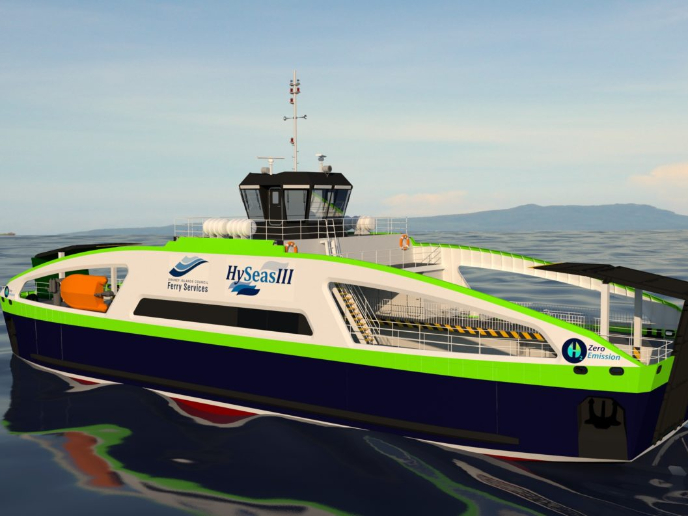Unveiling Europe’s first hydrogen-powered seagoing ferry
The first designs of what will become Europe’s first fuel cell-driven seagoing ferry have been completed, showing us what the ship will most probably look like. Developed as part of the EU-funded HySeas III project, the double-ended passenger and car ferry will be able to carry 120 passengers and 16 cars or 2 trucks. The designs, by AqualisBraemar LOC Group, provide a blueprint for future zero-emissions ferry travel. “Seeing the concept designs brings the project to life,” remarks John Salton of HySeas III project partner Caledonian Maritime Assets Ltd (CMAL) in a news release(opens in new window) posted on the company’s website. “The vessel design is broadly based on our larger loch class vessels, which are double-ended. Once the designs are approved, we will move to the next stage of the project, which will see the build of the engine to be used in feasibility studies,” CMAL’s Fleet Manager and Projects Director goes on to explain. The vessel has been designed to run the route between Kirkwall and Shapinsay in the Orkney archipelago to the north of mainland Scotland, where hydrogen fuel is generated using wind power. However, the ferry will also be able to operate at other ports where hydrogen may become available. According to the European Maritime Transport Environmental Report 2021(opens in new window), ships are responsible for 13.5 % of all greenhouse gas emissions from the transport sector in the EU. With regard to the state of shipping emissions in the United Kingdom (UK), Salton observes: “We know that maritime transport remains the UK’s largest emitter of greenhouse gases, and our Hyseas III project will pave the way for the first seagoing vessel using purely renewable energy.”
Testing the vessel components
Meanwhile, string testing is in progress in Norway to fully validate the vessel’s power train before it is built. String testing involves assembling all of the key power train components – fuel cell system, batteries, multidrives, transformers, and so on – and testing them as a system. HySeas III partner Kongsberg Maritime from Norway is performing a comprehensive range of commissioning, safety and verification tests assisted by Ballard Power Systems, the project’s Danish partner. “As with any project, the tests have highlighted issues that need to be addressed, and various troubleshooting activities are also underway. Once all these are completed satisfactorily, a full suite of system validation tests will be carried out, simulating how the system would be used in an actual ship,” reports the latest project update(opens in new window). “However even at this stage of testing, the team has accumulated extensive experience of integrating fuel cells and batteries into a marine propulsion system, and the work will help lay the foundation for safe, reliable and optimised use of hydrogen fuel cells on ships.” The HySeas III (Realising the world’s first sea-going hydrogen-powered RoPax ferry and a business model for European islands) project’s ferry design is expected to be completed in March 2022, after which CMAL will look for funding to progress to the procurement stage, and eventually to the tendering and construction of the vessel. Salton states: “The maritime industry has a key role in the global fight for climate change, and this project marks a step toward emissions-free marine transport.” For more information, please see: HySeas III project website(opens in new window)



